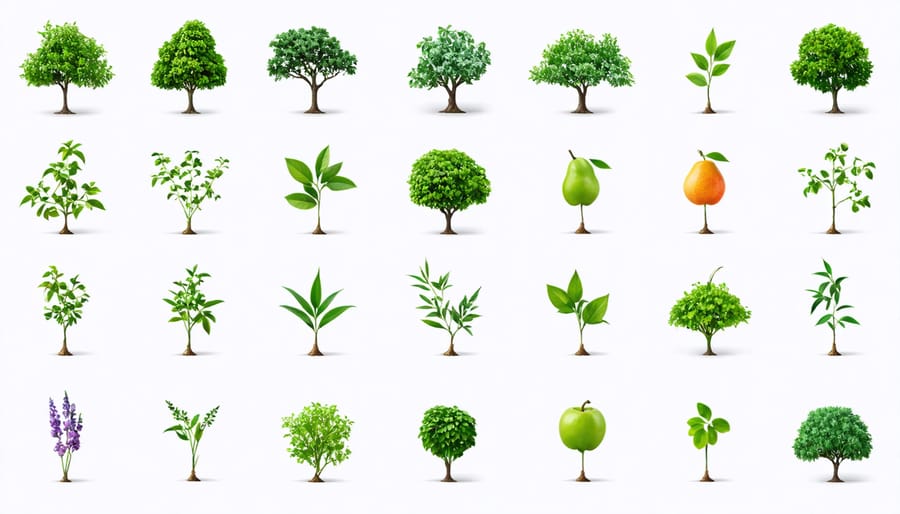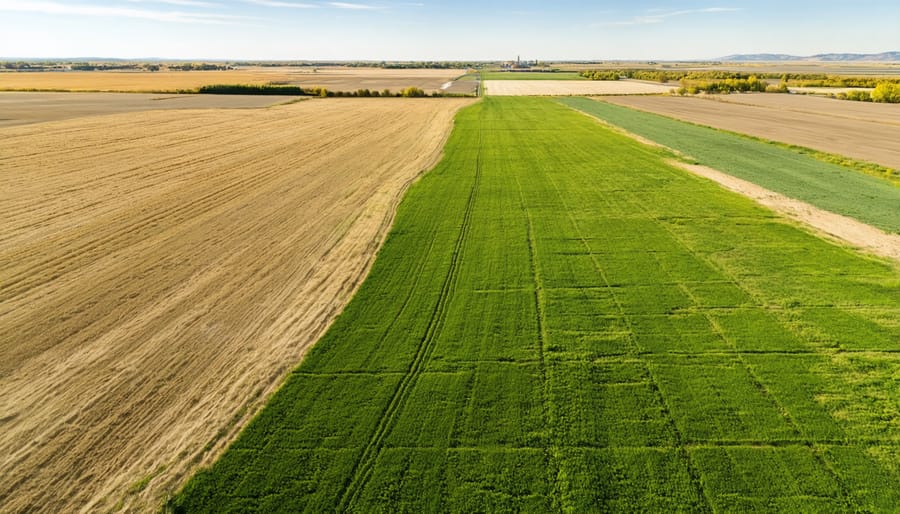Imagine a city where lush green spaces intertwine with vibrant urban life, where the boundaries between nature and civilization blur. This is the promise of urban agroforestry—a revolutionary approach to sustainable agriculture that harnesses the power of trees, crops, and community. By integrating diverse plant species into the urban landscape, agroforestry creates resilient ecosystems that provide food, shelter, and a myriad of environmental benefits. From rooftop gardens to edible parks, urban agroforestry is transforming the way we think about food production and green spaces. As cities grapple with the challenges of climate change, population growth, and food insecurity, urban agroforestry offers a path forward—a vision of a greener, more sustainable future. In this article, we will explore the principles, practices, and potential of urban agroforestry, and discover how this innovative approach is taking root in communities around the world. Join us on a journey to reimagine the urban landscape and cultivate a more resilient, nourishing future for all.
[200 words]
What is Urban Agroforestry?

Key Principles of Urban Agroforestry
The key principles of urban agroforestry revolve around diversity, multi-functionality, and ecosystem services. By integrating a variety of trees, shrubs, and crops, urban agroforestry systems create diverse and resilient landscapes that provide multiple benefits. These systems are designed to be multi-functional, serving purposes such as food production, carbon sequestration, air and water purification, and habitat creation. Urban agroforestry also focuses on delivering ecosystem services, which are the benefits that nature provides to human well-being. These services include regulating local climate, reducing urban heat island effects, improving soil health, and enhancing biodiversity. By adhering to these principles, urban agroforestry practices contribute to the development of sustainable and livable cities while strengthening local food systems and community resilience. Successful implementation of urban agroforestry requires a holistic approach that considers the specific needs and challenges of each urban environment, as well as the active engagement of local communities and stakeholders.
Benefits for Canadian Cities
Urban agroforestry offers numerous benefits to Canadian cities, contributing to environmental sustainability and community well-being. By integrating trees and crops into urban landscapes, cities can significantly increase carbon sequestration, helping to mitigate the effects of climate change. The strategic placement of trees and vegetation also helps combat the urban heat island effect, reducing temperatures and improving air quality. Additionally, urban agroforestry initiatives foster a sense of community by providing opportunities for residents to engage in food production and green space management. These collaborative projects not only increase access to fresh, locally-grown produce but also promote social cohesion and knowledge sharing among participants. From rooftop gardens to community orchards, the diverse agroforestry examples found in Canadian cities demonstrate the multifaceted benefits of this innovative approach to urban sustainability. By embracing urban agroforestry, cities across Canada can create more resilient, livable, and environmentally conscious communities.
Urban Agroforestry in Action: Canadian Case Studies
Edmonton’s Urban Food Forest
Edmonton’s urban food forest is a shining example of how urban agroforestry can transform communities and inspire sustainable practices. Located in the heart of the city, this innovative project has converted underutilized land into a thriving, edible landscape. By planting a diverse array of fruit trees, berry bushes, and other perennial plants, the food forest provides fresh, locally-grown produce for the community while also promoting carbon sequestration and biodiversity.
The impact of Edmonton’s urban food forest extends far beyond the harvest. It serves as a gathering place for community members to learn about sustainable agriculture, connect with nature, and foster a sense of belonging. Educational workshops and volunteer opportunities engage people of all ages, creating a culture of stewardship and empowerment.
The success of Edmonton’s urban food forest has caught the attention of other cities across Canada and beyond. It demonstrates the potential for urban agroforestry to address food security, environmental sustainability, and community well-being in a single, integrated approach. As more cities look to replicate this model, Edmonton’s project serves as a valuable blueprint for transforming urban spaces into vibrant, productive landscapes that nourish both people and the planet.

Calgary’s Edible Landscaping Initiative
The City of Calgary has embraced urban agroforestry through its innovative Edible Landscaping Initiative, which seamlessly integrates fruit-bearing trees and shrubs into public spaces. By replacing traditional ornamental plants with edible varieties, Calgary is transforming parks, boulevards, and community gardens into thriving ecosystems that promote biodiversity and food security. This forward-thinking approach not only beautifies the city but also provides a sustainable source of fresh, locally-grown produce for residents.
One notable example is the Hillhurst Sunnyside Community Orchard, where volunteers have planted and maintained a diverse array of fruit trees, including apples, pears, and cherries. The orchard serves as a gathering place for the community, fostering a sense of togetherness and connection to nature. Additionally, the city has collaborated with local schools to create edible schoolyards, teaching children about the importance of sustainable food systems and empowering them to become stewards of the environment.
Calgary’s Edible Landscaping Initiative showcases the potential of urban agroforestry to create resilient, multi-functional landscapes that benefit both people and the planet. As more cities follow Calgary’s lead, we can look forward to a future where the lines between nature and the built environment blur, and where every citizen has access to fresh, nutritious food right in their own backyard.
Implementing Urban Agroforestry: Tips for Canadian Farmers and Communities

Choosing the Right Trees and Crops
When selecting trees and crops for urban agroforestry in Canada, it’s crucial to consider the unique challenges posed by the urban environment. Opt for species that are well-adapted to your local climate, such as hardy varieties that can withstand cold winters in most parts of the country. Pay attention to soil conditions, as urban soils may be compacted or lacking in nutrients. Choose species that can thrive in these conditions or amend the soil as needed.
Pest and disease resistance is another key factor. Urban areas can be breeding grounds for certain pests, so selecting resistant varieties can minimize the need for chemical interventions. Native species are often a good choice, as they are naturally adapted to local conditions and support biodiversity.
Consider the growth habits and mature sizes of trees and crops to ensure they fit within the available space. Compact varieties or those that can be pruned to maintain a smaller size are ideal for urban settings. Vertical growing techniques, such as trellising or espalier, can also maximize space efficiency.
Ultimately, the best species for your urban agroforestry project will depend on your specific goals and location. As explored in about water infiltration, understanding soil and water dynamics is crucial, so consult with local experts, such as extension agents or experienced urban farmers, to get tailored recommendations for your area.
Engaging the Community
Engaging the community is crucial for the long-term success and social benefits of urban agroforestry projects. To involve local communities, begin by hosting informational sessions and workshops to educate residents about the benefits of urban agroforestry and how they can participate. Collaborate with community leaders, schools, and non-profit farming organizations to spread awareness and gather input during the planning phase.
Encourage community members to volunteer in the establishment and maintenance of urban agroforestry sites. Organize planting events, tree care workshops, and harvest festivals to foster a sense of ownership and pride in the project. Engage local youth through educational programs and hands-on activities, helping them develop a connection to nature and an understanding of sustainable food systems.
Establish a community advisory board to ensure the project remains responsive to local needs and preferences. Regularly seek feedback and ideas from residents to continuously improve the project and maximize its social impact. Collaborate with local businesses and farmers’ markets to create opportunities for the sale and distribution of harvested products, supporting the local economy and increasing access to fresh, locally-grown food.
By actively involving the community in all aspects of urban agroforestry, from planning to harvesting, projects can build strong social connections, promote environmental stewardship, and contribute to the overall well-being of the community.
Conclusion
In conclusion, urban agroforestry offers a promising solution for creating sustainable, resilient, and vibrant Canadian cities. By integrating trees and agriculture into urban landscapes, we can enhance food security, improve air quality, increase biodiversity, and foster a sense of community. The numerous environmental, social, and economic benefits of urban agroforestry make it a valuable tool for addressing the challenges faced by our growing cities.
As we look towards the future, it is essential that we embrace innovative approaches like urban agroforestry to build more sustainable and livable urban environments. By working together, farmers, policymakers, and communities can develop and implement urban agroforestry projects that benefit everyone.
We encourage you to get involved in local initiatives and support the growth of urban agroforestry in your community. Whether it’s participating in community gardens, supporting local farmers’ markets, or advocating for policies that promote urban agriculture, every action counts. Together, we can create a greener, healthier, and more sustainable future for our cities and for generations to come.











